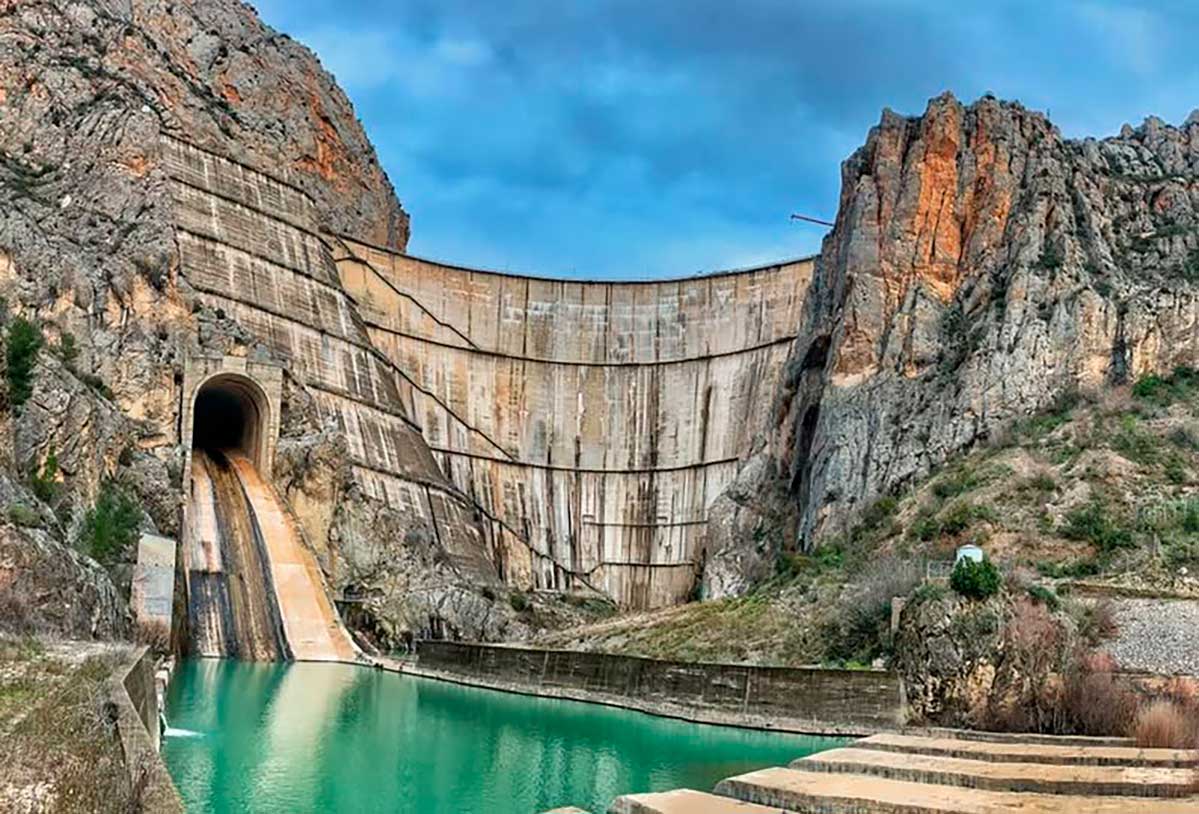
The Canelles Dam: a monumental work of engineering and human sacrifice
The Canelles dam, built between 1953 and 1959 on the Noguera Ribagorçana river, straddling the provinces of Lleida and Huesca, is one of the most important hydroelectric infrastructures in Spain. Beyond its technical and functional impact, its construction profoundly marked the history of Ribagorça and Montsec, both for its scope and for the human conditions that made it possible.
A project of national magnitude
The project was promoted by ENHER (Empresa Nacional Hidroeléctrica del Ribagorzana), a public company created to take advantage of the hydraulic resources of the river basin. The global hydroelectric exploitation project was designed by the Catalan engineer Victoriano Muñoz Oms, and the specific intake was designed by one of the most prestigious structural engineers of the time: Eduardo Torroja Miret.
The dam is of the double-curved vault type, with a height of 150 meters and a crest length of 210 meters. When it was finished, it was the tallest dam in Europe and a benchmark of modern engineering. Its reservoir can store up to 687.5 cubic hectometres of water, making it the largest in the Segre basin and the second largest in the Ebro basin.
An engineering challenge
To build it, it was necessary to divert the course of the river by means of tunnels and weirs, working dry in the foundation area. But one of the most complex challenges was the nature of the terrain where the dam was located, especially the karst massif on the left bank, formed by fractured limestone rock and with the presence of cracks and cavities.
During the initial filling of the reservoir, very significant water leaks were detected through this rock, which put the safety of the structure at risk. To solve this, a deep waterproofing screen was built, injecting concrete and other materials to seal the gaps and reinforce the ground.
These stabilization works were carried out in two phases:
- 1957–1962: First intervention to control leaks.
- 1971–1973: new phase to strengthen the tightness against persistent leaks.
This episode put the Spanish engineering of the moment to the test, which managed to solve the problem without paralyzing the project.
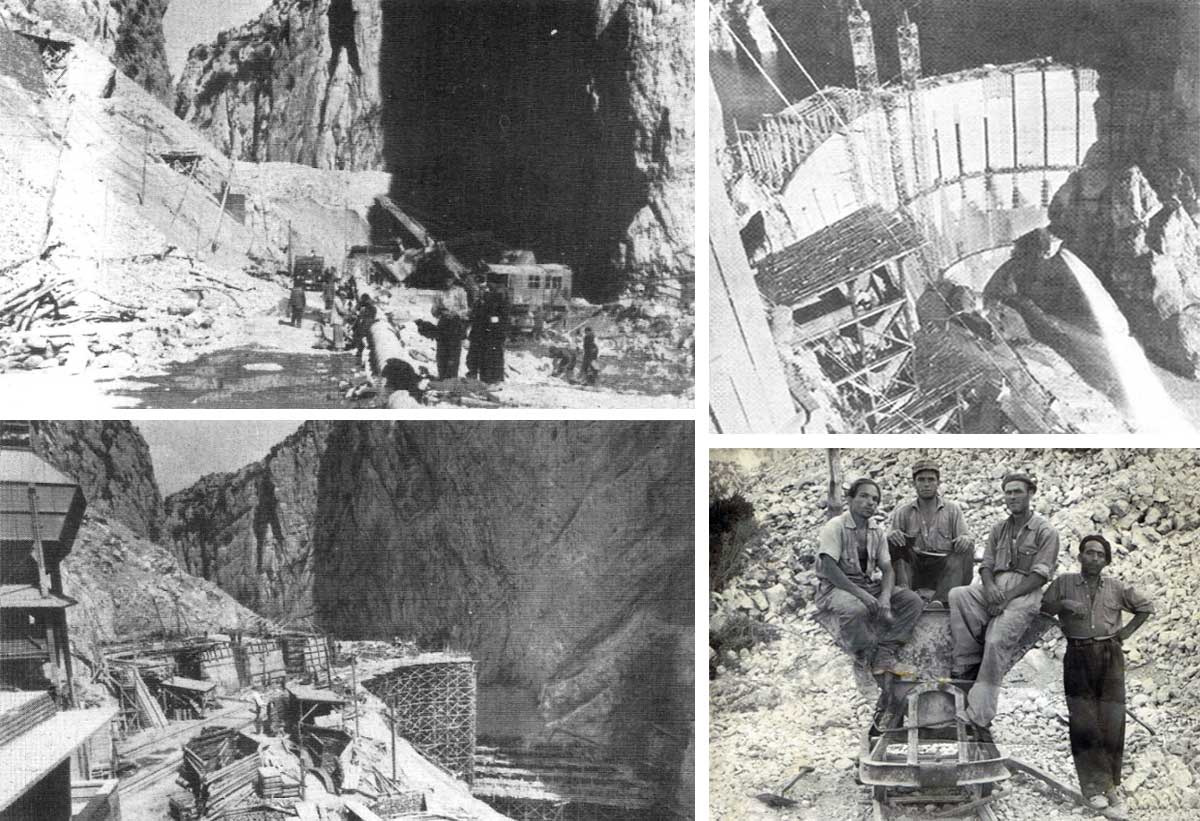
Workers: between progress and suffering
The construction mobilized some 2,800 workers, many of them from impoverished rural areas of southern Spain, especially from Andalusia and Murcia. To accommodate them, a provisional village was built in Canelles, with barracks, services and basic equipment, which reached more than 4,000 inhabitants, more than many neighboring municipalities.
Working conditions were extremely harsh. Long hours, lack of security, precarious housing and constant accidents. The testimonies of the time speak of a very strict disciplinary regime. The German engineer known as Kraus directed the works with an iron fist, generating a tense atmosphere between management and workers.
According to documentary sources, between 33 and 57 workers lost their lives during the works, a figure that has often been silenced.
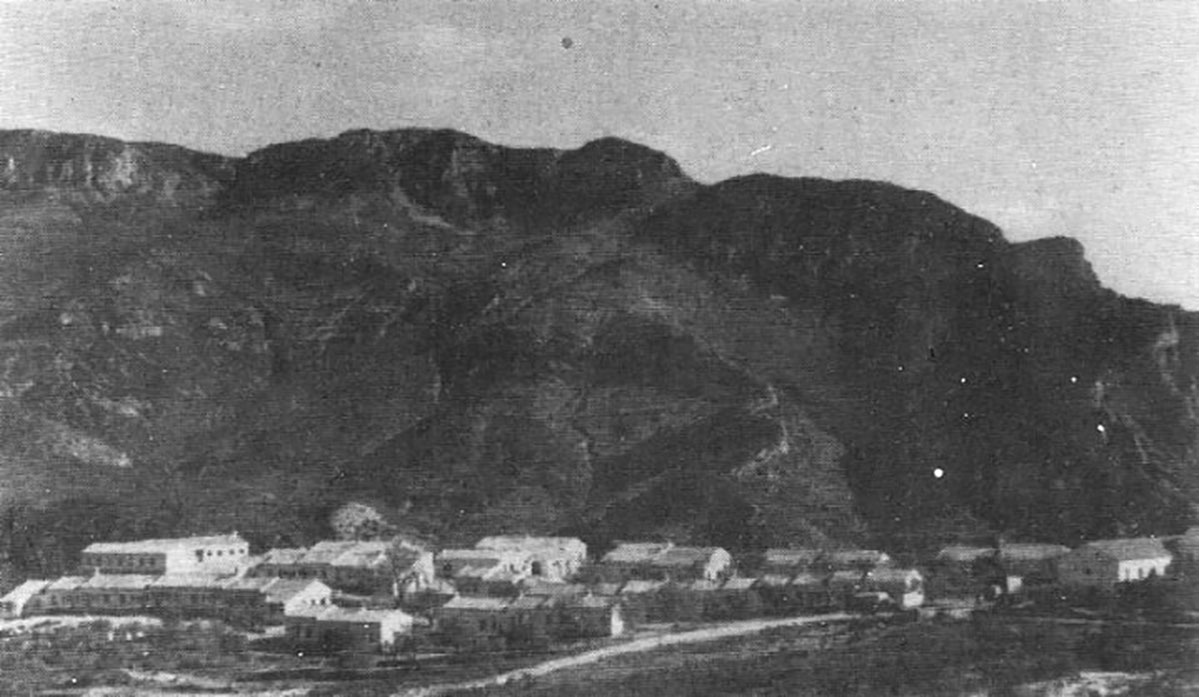
Impact on the territory
The dam and reservoir caused the disappearance of several inhabited areas, such as the village of Blancafort (partly submerged), and the loss of farmland and ancestral roads. The relief of the Mont-rebei gorge was also radically modified, affecting traditional activities and cutting off historical communications.
At the same time, however, the infrastructure made an important energy contribution and consolidated ENHER’s presence in the Ebro basin.
The flooded
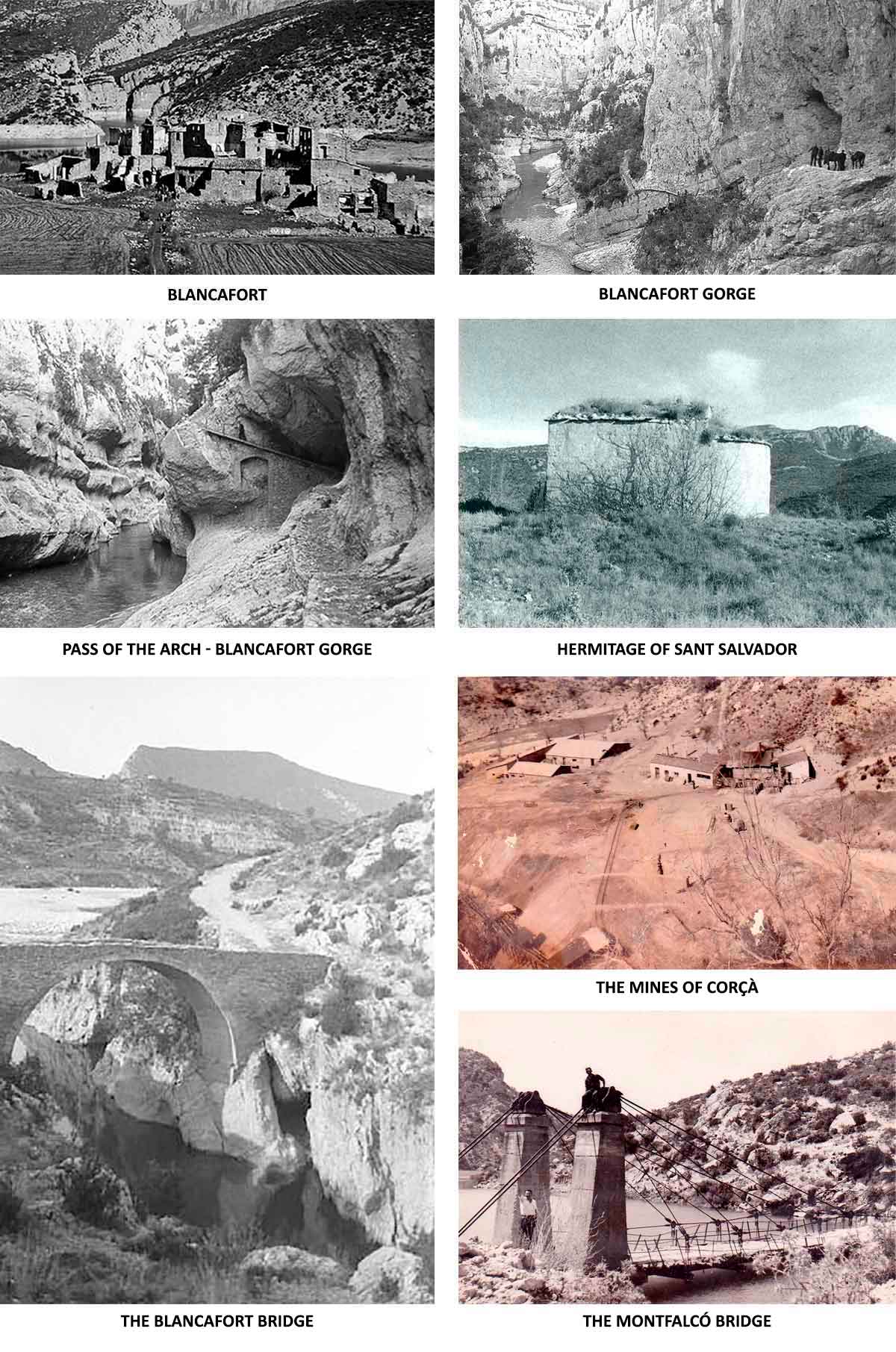
The uninhabited
The construction of the Canelles reservoir had a significant impact on several population centres in the area, causing the abandonment of several villages.
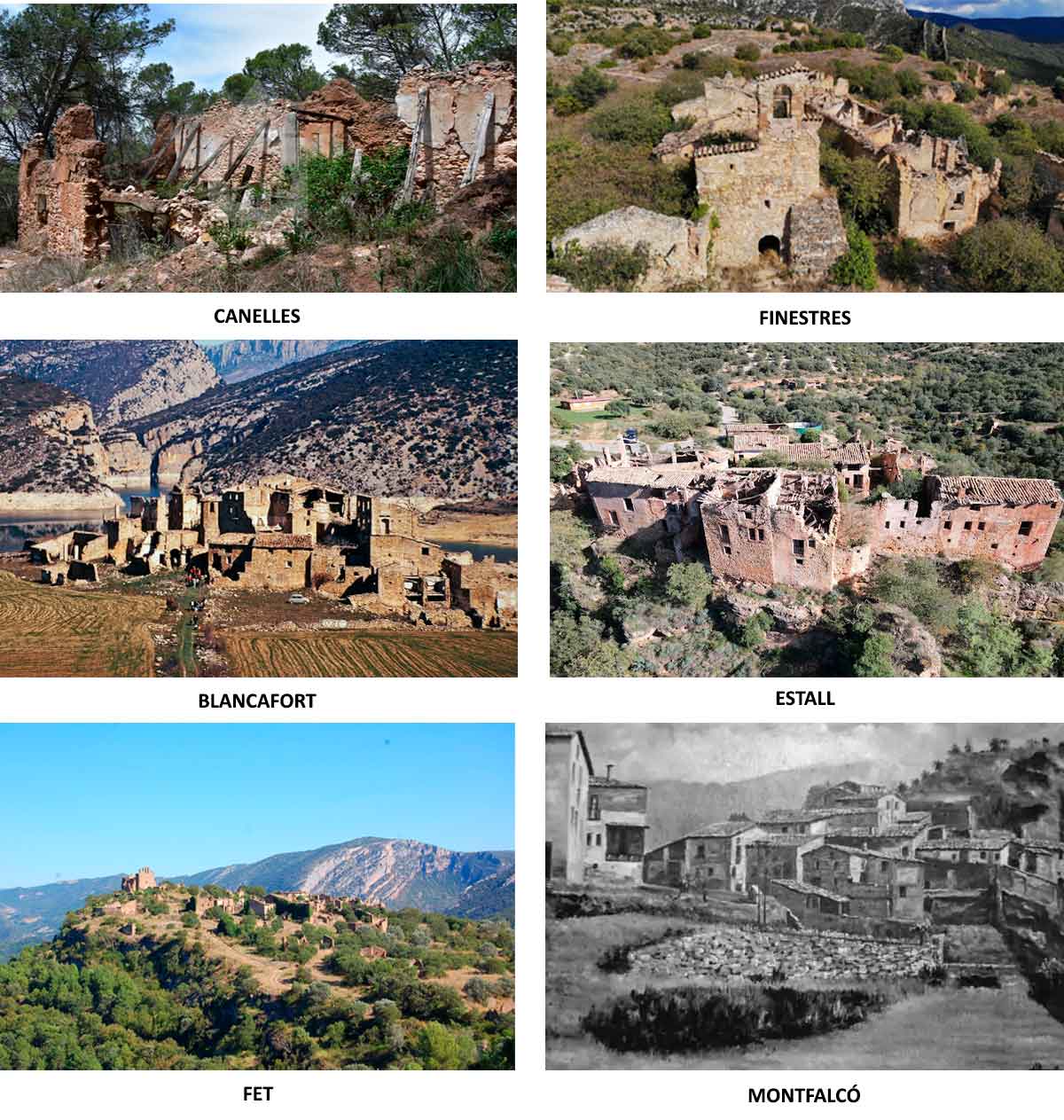
These examples illustrate how the construction of the Canelles reservoir profoundly transformed the territory, altering the landscape and causing the disappearance of several communities that, until then, had had an active life in these regions.


